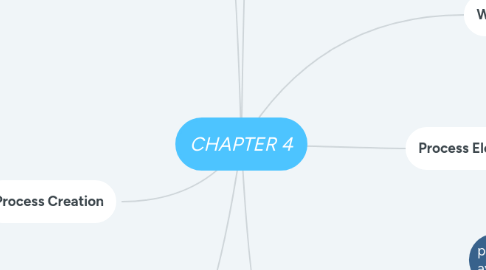
1. Process State
1.1. Dispatcher
1.1.1. small program that switches the processor from one process to another
1.2. Trace
1.2.1. behaviour of an individual process by listing the sequence of instruction that execute for that process
1.2.2. behaviour of processor can be characterized by showing how the traces of the various processes are interleaved
2. Processes & Threads
2.1. Units
2.1.1. Unit of resource ownership
2.1.1.1. process
2.1.1.2. task
2.1.2. unit of dispatching
2.1.2.1. lightweight process
2.1.2.2. thread
2.1.3. Multithreading
2.1.3.1. ability of OS to support multiple,concurrent paths of execution in single process
2.2. Resource Ownership
2.2.1. process includes virtual add spcace to hold the process image
2.3. Scheduling/Execution
2.3.1. follows an execution path that may be interleaved with other processes
3. Process Creation
3.1. Process Spawning
3.1.1. when the OS creates a process at the explicit request of another process
3.2. Parent Process
3.2.1. the original,creating process
3.3. Child Process
3.3.1. the new process
4. What is process?
4.1. entity that can be assigned to,and executed on,a processor
4.2. an instance of running program
4.3. a program in execution
5. Process Elements
5.1. Program Code
5.1.1. might share with other processes executing same program
5.2. Set of data linked with code
5.2.1. when processor begins executing the program code,we refer to this executing entity as process

